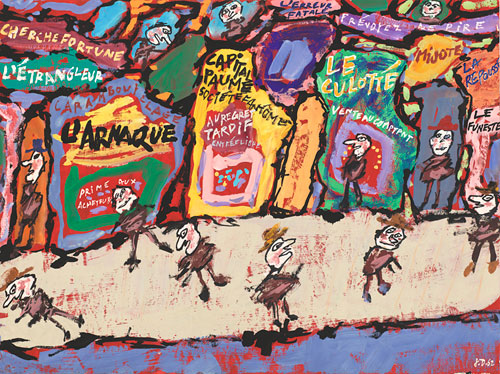
In the mid-1940s, French artist Jean Dubuffet (1901–1985) shocked the art establishment with his paintings inspired by children’s drawings, graffiti, and the art of psychiatric patients. Rejecting conventional notions of beauty and good taste, Dubuffet asserted that invention and creativity could only be found outside traditional cultural channels. In his efforts to emulate the immediacy of the untrained and untutored, he often turned to drawing, a medium in which he could indulge his passion for research and experimentation.
Dubuffet Drawings, 1935–1962 is the first museum retrospective of the artist’s works on paper. The exhibition includes approximately one hundred drawings from Dubuffet’s most innovative decades and features rarely seen works borrowed from private and public collections in France and the United States. His favorite subjects were mundane activities of everyday life—taking the subway, bicycling in the countryside—but he also tackled traditional genres like the portrait, the female nude, and the landscape, all the better to subvert expectations with his outrageous depictions. Insatiably curious, Dubuffet explored unorthodox materials and techniques, instilling into his drawings a sense of adventure that has kept them vibrant and relevant to this day.
Dubuffet Drawings is made possible with lead funding from the Pierre and Tana Matisse Foundation and the Florence Gould Foundation, and assistance from the Ricciardi Family Exhibition Fund, Aaron I. Fleischman and Lin Lougheed, The Grand Marnier Foundation, Richard and Mary Gray, Nancy Schwartz, Frances Beatty and Allen Adler, Isabel Stainow Wilcox, and the Janklow Foundation. The catalogue is made possible by the Andrew W. Mellon Fund for Research and Publications.
Jean Dubuffet, L’Arnaque (The Swindle), June 2, 1962, Gouache. National Gallery of Art, Washington, Gift of the Stephen Hahn Family Collection, 1995. © 2016 Artists Rights Society (ARS), New York / ADAGP, Paris.
